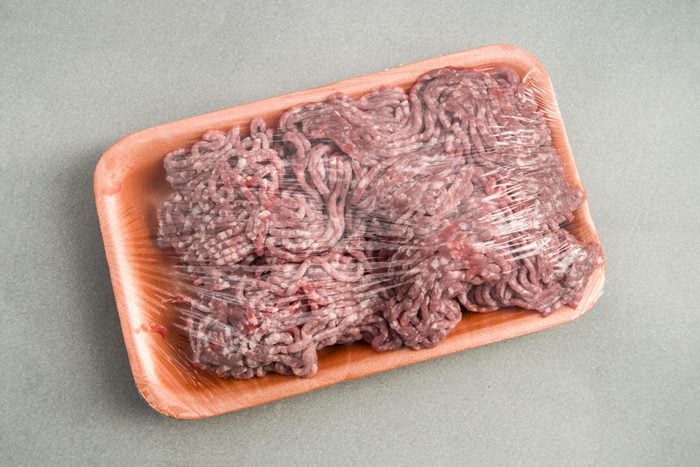How to Tell if Ground Beef Is Bad
Updated: Feb. 27, 2023

No one wants to get sick from a package of ground beef! Here's how to tell if ground beef is bad (including whether that gray color really matters).
Ground beef is a fantastic ingredient to have around. It can be used to make hundreds of different recipes from varying cuisines, so it’s versatile enough to satisfy foodies and picky eaters alike.
However, cooks need to be careful because ground beef is highly perishable. Grinding the meat exposes it to oxygen, causing it to go bad more quickly than a whole-muscle steak.
Wondering how to tell if ground beef is bad before you use it for your favorite ground beef recipe? Follow these three steps.
3 Ways to Tell If Your Ground Beef Is Bad
Check the Color
Surprisingly enough, the color of ground beef isn’t enough to raise the alarm. Meat is full of a pigment called myoglobin, which is responsible for delivering iron and oxygen to muscles. When this pigment is exposed to air, it turns bright red. Because it looks so nice, most butchers use a special plastic wrap that allows some oxygen to get through, giving the top layer of your ground beef a bright, red color.
The only problem? All that ground beef underneath the top layer has no access to oxygen, so it turns an unappealing color of gray. This will also happen to any beef you store in the freezer. It’s perfectly safe to eat, although you should be aware that the color indicates it has been previously frozen or it’s sat in the package for a while. (Learn whether freezer-burned food is safe to eat.)
That said, if the top layer of beef has turned gray or brown (and it was never frozen), it’s time to throw the package out. You’ll also want to be on the lookout for other colors, like white or blue, which could indicate mold has started to grow.
Smell It
Fresh ground beef should smell neutral, with a light iron aroma. It will take on a slight odor if it’s been in the package for a while and is close to reaching its expiration date. But, if the smell is strong enough to make you wrinkle your nose, you know it’s time to toss it. Be on the lookout for ground beef that smells rotten or sour. When in doubt, it’s best to throw it out. An off aroma is a sign of spoilage, especially if you see other signs in the color and texture.
Notice the Texture
The biggest risk factor when it comes to ground beef is Salmonella and E. coli. These bacteria don’t affect the color of ground beef (nor the smell), so it’s important to perform a touch test if the beef is in question. Fresh ground beef is firm and springs back easily if you poke it. Squeezing the beef between your fingers (I know, gross, right?) will cause the meat to crumble. If it’s gone bad, the beef will be slimy and sticky, and it won’t crumble as easily.
What Happens When You Eat Bad Ground Beef
Eating bad ground beef is not fun. If the beef is not handled properly, or it’s too old, pathogenic bacteria can grow and lead to some unpleasant food poisoning symptoms.
Signs of foodborne illness from bad ground beef include stomach cramps or pain, vomiting, diarrhea, chills and/or fever. Symptoms can occur anywhere from one hour to 72 hours from consumption and generally last less than a week.
It’s not fun, and foodborne illness can be dangerous for the very young or old or those with compromised immune systems. So, when in doubt, throw it out!
Knowing whether meat has gone bad is tricky. Learn how to tell if salmon is bad and how to tell if chicken is bad.
How to Handle Ground Beef
Proper handling and storage of ground beef is the best way to prevent it from going bad. Start by inspecting the package at the store. It should feel cold to the touch without any holes or scratches in the wrapping, and the meat should be red. Be sure to peek at the expiration date, too.
Head straight home and get the ground beef into the refrigerator as soon as possible. To prevent cross-contamination, store ground beef wrapped in a bag on the bottom shelf in case any of the juices leak from the package. Be sure to use or freeze the ground beef by the expiration date. Defrosted ground beef is good in the fridge for up to two days if it was thawed in the refrigerator, but you’ll want to cook it immediately if you used the microwave or thawed it in cold water.
The USDA recommends cooking ground beef to an internal temperature of 160°F before serving it. Serve cooked ground beef immediately or refrigerate it within two hours of cooking. When properly stored in airtight containers, leftover ground beef is good for three to four days. Next, read on to see whether or not to rinse ground beef.
